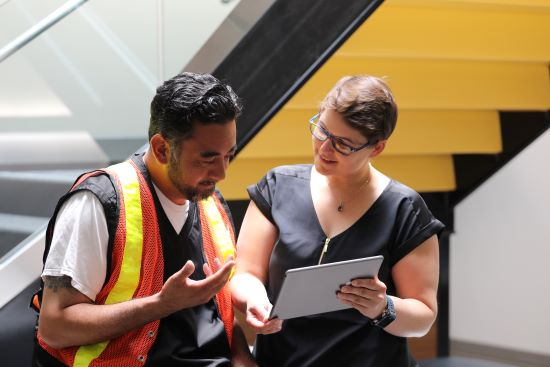What leaders of strong safety programs look like
Using personal experience, best practices, and industry research, below are the qualities of leaders who effectively motivate and engage coaches in their safety programs.
The skills to successfully coach coaches on safety are the same as those needed to coach drivers:
- Pay attention to the details
- Focus on execution
- Create standardized and disciplined procedures
- Understand roles
- Use meaningful metrics
- Have personal accountability
- Align group vision and mission
In a broader sense, an effective safety leader is engaging. Being able to engage coaches in a safety program is more important than being a visionary or fountain of knowledge.
Also, the best fleet safety leaders have these behaviors in common:
- Model. Leaders model the behavior they want to see from coaches and step to the front to show it.
- Facilitate. Leaders understand what their coaches need to do their jobs well. They find simple solutions for complex problems—small ways to make things better.
- Enable. Leaders empower coaches to figure out the answer versus just giving orders or reciting safety procedures. And when coaches are successful, leaders shine the spotlight on them.
Aside from skills and behaviors, safety leaders should follow a set of best practices to engage and motivate coaches, further embedding a culture of safety in the fleet.
7 best practices for fleet safety leaders to motivate coaches
Remember, what motivates your drivers will also motivate your coaches. It all starts with strong leadership.
- Create a compelling ROI story to win and retain the support of senior leadership. Safety is not a revenue-generating department. It's an expense. Leaders need to bring in programs that will lower expenses (e.g. the reduction in collision costs) and that's the ROI. Proving the ROI of your safety initiatives always involves showcasing the results your coaches gained with drivers—this will not only win leadership buy-in but emphasize the important role of coaches. Coaches are motivated by knowing how their jobs contribute to fleet ROI and feel valued by leadership.
- Elevate employee engagement with a strong safety culture. Similar to the approach used with drivers, coaches should know they’re not alone in their efforts to improve safety and that every individual in the organization is working toward that goal. Some tips for employee engagement include: using case studies to create urgency around safety, building internal coalitions, having a vision and broadcasting it widely, getting some short-term wins, and empowering front-line managers by making them accountable for progress and giving them the tools to achieve.
- Keep coaches on track with quick, continuous feedback. It’s been proven that ongoing coaching connects drivers to the safety culture and is more effective than episodic training. The same is true for coaching coaches. Managers should consistently check in with coaches and help them address challenges while offering direction on how to help guide drivers.
- Boost buy-in with effective communications. It’s impossible to over-communicate a safety program. Use all the tools available (email, posters, texts, etc.) for safety communications, and remember it’s a two-way street—take feedback from coaches as they’re the people seeing what’s happening in the field every day.
- Leverage analytics to increase safety program effectiveness. Data and technology help identify and focus on the most important areas of risk in order to measure progress and continually improve. Sharing this data with coaches will help them understand how their day-to-day sessions with drivers are contributing to overall safety goals. And the clear metrics will make it easier to explain what needs to change and why.
- Integrate all safety technologies. Making sure all technologies, ranging from vehicle systems to video telematics software, play nice together helps fleets scale and get accurate data to support their safety initiatives. This saves time and lowers frustrations for coaches, who will be able to access the tools they need in one place versus bouncing around systems to hold an effective coaching session.
- Create accountability. Coaches should know their role within the safety program and how they’ll be measured. This sets a clear path to reach all safety goals. Remember to also celebrate achievements and their positive impacts – reductions in collisions or emissions not only save money but also saves lives.
Programs that motivate drivers can motivate coaches, too. It all starts with strong leadership for your coach and the rest will fall in place.
